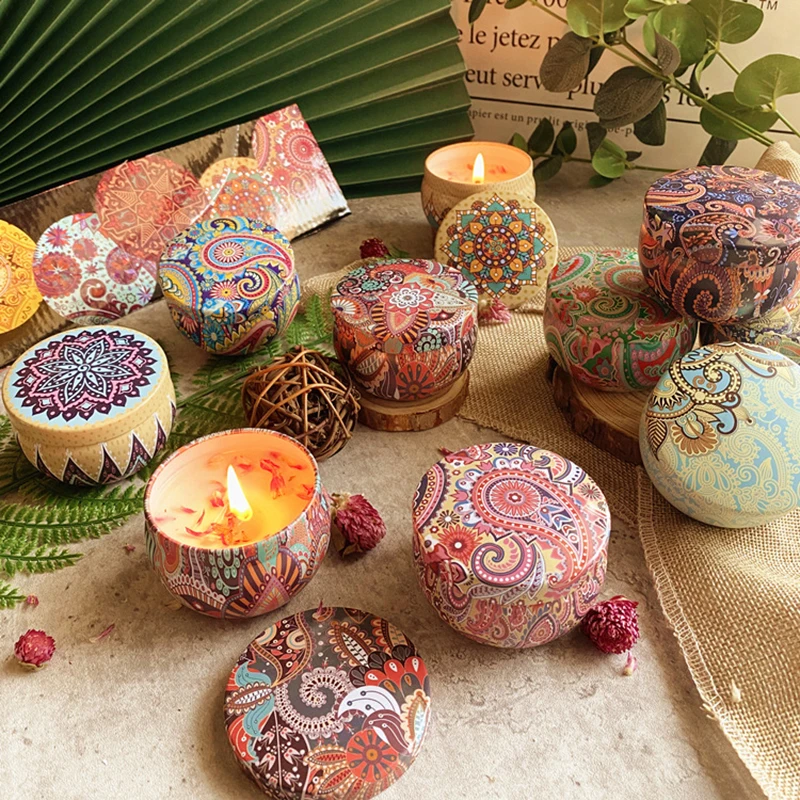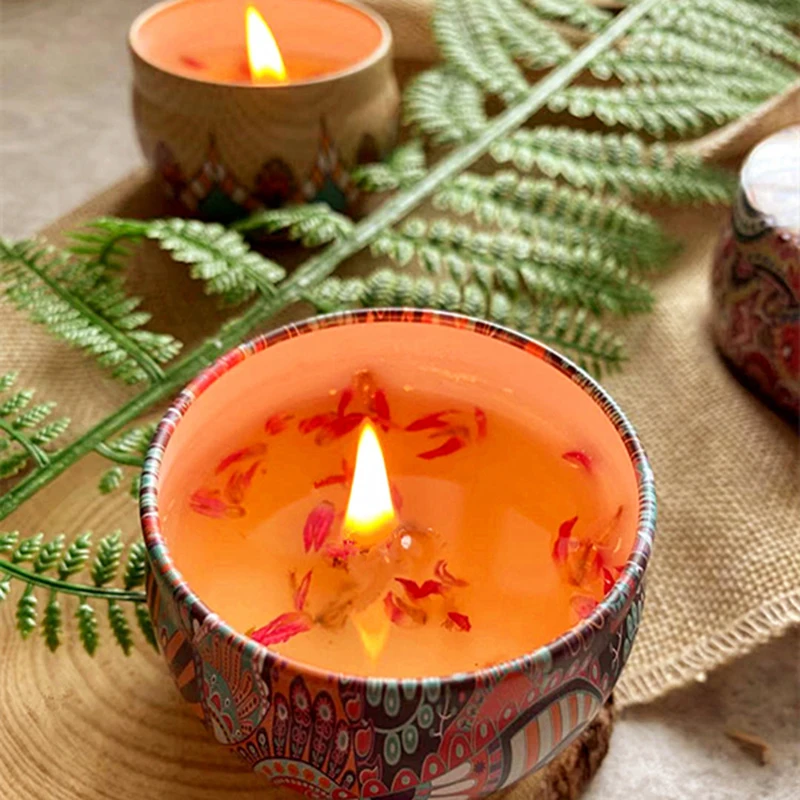Scented candles are a popular choice for adding a pleasant aroma to our living spaces. They can set a relaxing mood, enhance a room’s ambiance, and even serve as decorative elements. However, there has been growing concern about whether these candles might pose health risks. In this comprehensive article, we will delve into the truth about scented candles, exploring their potential health impacts, the ingredients used, and what consumers can do to make informed choices.
Understanding Scented Candles: How Do They Work?
Scented candles work by releasing fragrance into the air as they burn. The process begins when the candle’s wick is lit, and the wax starts to melt. Fragrance oils, which are mixed into the wax, are released as the candle burns and are carried into the air. This release of fragrance can significantly alter the scent profile of a room, creating an atmosphere that is perceived as calming, invigorating, or festive, depending on the chosen scent.
The composition of scented candles can vary widely. Basic candles may use paraffin wax, while others might employ soy, beeswax, or palm wax. The fragrance oils used can be natural or synthetic. Synthetic fragrances are often composed of various chemicals that can contribute to indoor air pollution when burned. Understanding the basic functioning of scented candles helps in assessing their potential health risks.

Ingredients in Scented Candles: What’s Really Inside?
The primary components of scented candles include wax, wick, and fragrance oils. Each of these elements can influence the candle’s safety and potential health effects.
Wax Types and Their Implications
The most common waxes used in scented candles are paraffin, soy, beeswax, and palm wax. Paraffin wax, a byproduct of petroleum refining, is inexpensive and commonly used, but it has been criticized for potentially releasing harmful chemicals when burned. Soy wax is derived from soybeans and is often marketed as a healthier alternative. Beeswax, produced by bees, is considered one of the safest options and is known for its air-purifying properties. Palm wax, derived from palm oil, is another alternative but has environmental considerations associated with palm oil production.
Wick Materials and Safety
Wicks can be made from various materials, including cotton, wood, or metal. Historically, some candle wicks contained lead, but this practice has been banned in many countries due to health concerns. Modern wicks are generally made from cotton or wood, which are safer options. However, the quality of the wick can still affect how the candle burns and its potential emissions.
Fragrance Oils: Natural vs. Synthetic
Fragrance oils can be natural (derived from essential oils) or synthetic. Natural fragrances are typically considered safer, but they can still cause allergic reactions in some individuals. Synthetic fragrances, on the other hand, are composed of various chemicals and may contribute to indoor air pollution. These chemicals can include phthalates, which are used to make scents last longer but have been linked to potential health risks.
Health Risks Associated with Scented Candles
While scented candles can enhance the atmosphere of a room, they may also pose health risks, especially if used frequently or in poorly ventilated spaces. The main concerns revolve around indoor air quality and the potential release of harmful substances.
Volatile Organic Compounds (VOCs)
When burned, scented candles can release volatile organic compounds (VOCs) into the air. VOCs are chemicals that can contribute to indoor air pollution and may have adverse health effects. Common VOCs found in candle emissions include formaldehyde and benzene, which are known to be carcinogenic. The extent of VOC emission depends on the type of wax and fragrance used. Paraffin wax candles, in particular, have been shown to emit higher levels of VOCs compared to alternatives like soy or beeswax.
Particulate Matter and Respiratory Health
Burning candles can also produce particulate matter, which consists of tiny particles that can be inhaled into the lungs. Studies have shown that paraffin candles can release soot and particulate matter, which may contribute to respiratory issues, especially for individuals with asthma or other respiratory conditions. Choosing candles made from cleaner-burning waxes like beeswax or soy may help reduce the amount of particulate matter released into the air.

Allergic Reactions and Sensitivities
Individuals with allergies or chemical sensitivities may experience adverse reactions to scented candles. Synthetic fragrances, in particular, can trigger allergic reactions or exacerbate existing conditions. Symptoms may include headaches, dizziness, skin irritation, or respiratory discomfort. It’s essential for those with known sensitivities to choose candles made from natural ingredients or avoid scented candles altogether.
Choosing Safer Alternatives: What to Look For
If you enjoy the ambiance of scented candles but are concerned about potential health risks, there are several strategies you can use to minimize exposure to harmful substances.
Opt for Natural Wax Candles
Choosing candles made from natural waxes such as beeswax or soy can be a safer option. Beeswax candles are known for their air-purifying properties and produce minimal soot. Soy candles, when made from 100% soy wax, generally burn cleaner than paraffin candles. Look for candles that specify they are made from natural or non-toxic waxes.
Select High-Quality Fragrance Oils
If you prefer scented candles, opt for those that use natural essential oils rather than synthetic fragrances. Essential oils are derived from plants and are less likely to contain harmful chemicals. Be cautious, however, as some individuals may still be sensitive to certain essential oils. Read product labels to ensure that the fragrance oils used are natural and free from harmful additives.
Consider Unscented or Low-Scent Options
If you are concerned about the potential health effects of scented candles, consider using unscented candles or those with minimal fragrance. Unscented candles can still provide the ambiance and warmth of candlelight without the added risk of fragrance-related issues. For those who enjoy a subtle scent, look for candles labeled as “low-scent” or “lightly scented.”

Proper Candle Use and Ventilation
Proper usage and ventilation are essential to minimize any potential health risks associated with burning candles. Follow these guidelines to ensure safer candle use.
Burn Candles in Well-Ventilated Areas
Ensure that candles are burned in well-ventilated spaces to help disperse any potentially harmful emissions. Avoid burning candles in small, enclosed rooms where air circulation is limited. Proper ventilation helps reduce the concentration of indoor air pollutants and improves overall air quality.
Trim Wicks Regularly
Trimming candle wicks to approximately 1/4 inch before each use can help reduce soot production and improve the candle’s burn quality. Long or untrimmed wicks can lead to excessive smoke and soot, which can contribute to indoor air pollution.
Avoid Prolonged Burning
Avoid burning candles for extended periods, as prolonged exposure to the emissions can increase health risks. Limit candle burning to a few hours at a time and ensure that the room is well-ventilated.
Conclusion: Making Informed Choices
Scented candles can add a pleasant ambiance to any space, but it’s important to be aware of their potential health risks. By understanding the ingredients used in candles, the potential for harmful emissions, and how to choose safer alternatives, you can make informed decisions that align with your health and well-being.
Opting for candles made from natural waxes, using high-quality fragrance oils, and ensuring proper ventilation are key strategies for minimizing health risks. Ultimately, being aware of what goes into your candles and how they affect indoor air quality will help you enjoy the benefits of candlelight while maintaining a healthy living environment.
By staying informed and choosing wisely, you can continue to enjoy the ambiance and beauty of scented candles without compromising your health.


